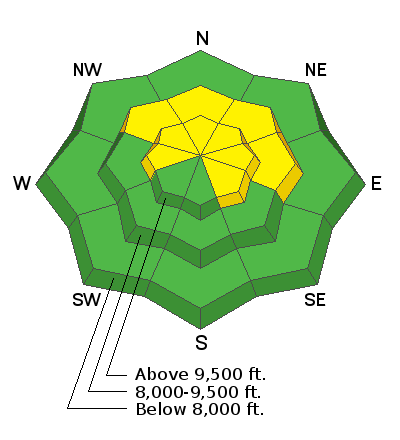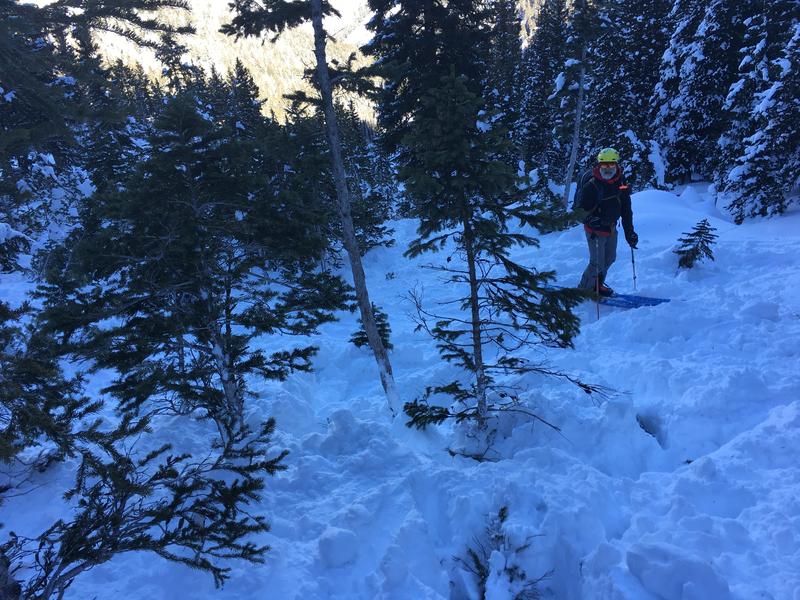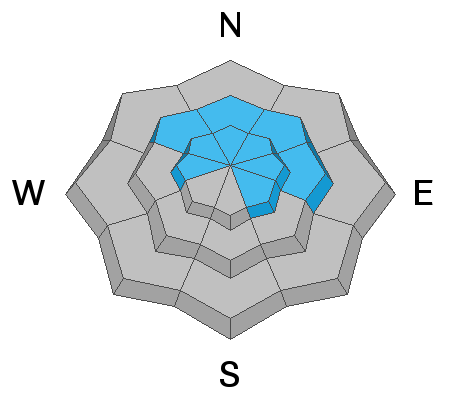Tonight at 6:30 p.m. at the Park City Library: Learn about the "Current state of the snowpack... how did we get here? and where are we going." 1255 Park Avenue, Park City, Utah. Presented by the Park City Professional Ski Patrol Association and the Utah Avalanche Center.
Check out the new free online avalanche course series developed by the Utah Avalanche Center. This is a great way to refresh your skills or prepare you for a Backcountry 101 or Level 1 class.
I guess if you blinked, you'd never know a weak weather system moved through overnight, but sure enough. Skies are clear and mountain temperatures with the weak cold front are in the upper mid-20s. The gusty southwesterlies veered to the west northwest overnight and are now blowing 10-15mph with gusts to 25. Current snow stakes sit at 25-35". With a week since the last snowfall, I'll admit the snow is getting a bit rough around the edges: supportable to breakable crusts on the southerlies and wind effect and hard wind-whales in the high alpine. The good news is that soft settled powder exists in the sheltered, shady terrain. It's not really powder snow, per se, but recrystallized snow, faceted snow. A man of boundless curiosity, Peter Donner looked into the origins of the word facet and found, Origin: Early 17th century: from French facette, diminutive of face ‘face, side’ (see face). The working definition is more subtle, "One side of something many-sided, especially of a cut gem." Indeed they are beautiful, facets. We'll be keeping an eye on the surface facets and any lingering surface hoar with tomorrow's quick hitting storm.
Tomorrow's quick hitter at the very least will sweep the smog out of the valleys and probably produce 2-5" of true powder for the mountains. It's a sharp looking cold front with mountain temps dropping to the upper single digits and a wind shift to the northwest. Post-frontal winds, however, look to remain moderate to strong until evening. On Saturday, a skier was caught, partially buried, and injured in an avalanche in the central Wasatch. It was in upper Porter Fork of Mill Creek Canyon (NW aspect, 9500 feet, 45 degree slope angle). The avalanche was confined by terrain and was only about 30 ft wide but ran 600 feet vertical. He was the second person on the slope and it broke about 100 ft above him. He was able to hike out under their own power but one ski was broken in half. Read more details
HERE.
In the photo below, Paul Diegel - long time (and recently retired) executive director of the UAC - looks down at where the captured skier came to rest, partially buried around these trees in the runout zone,











